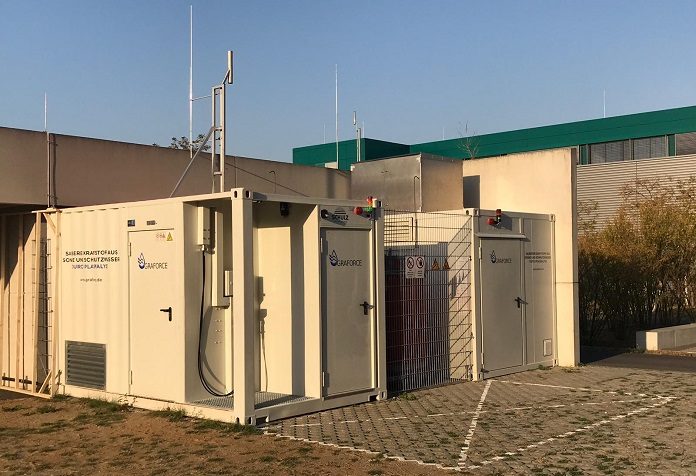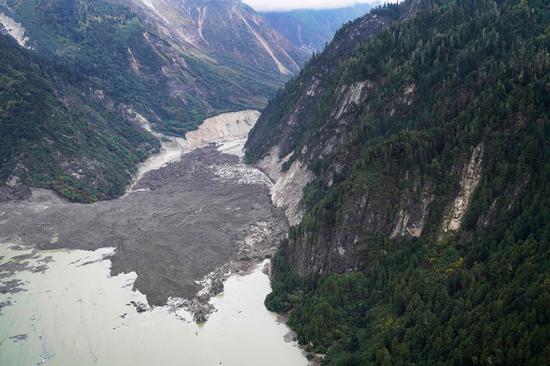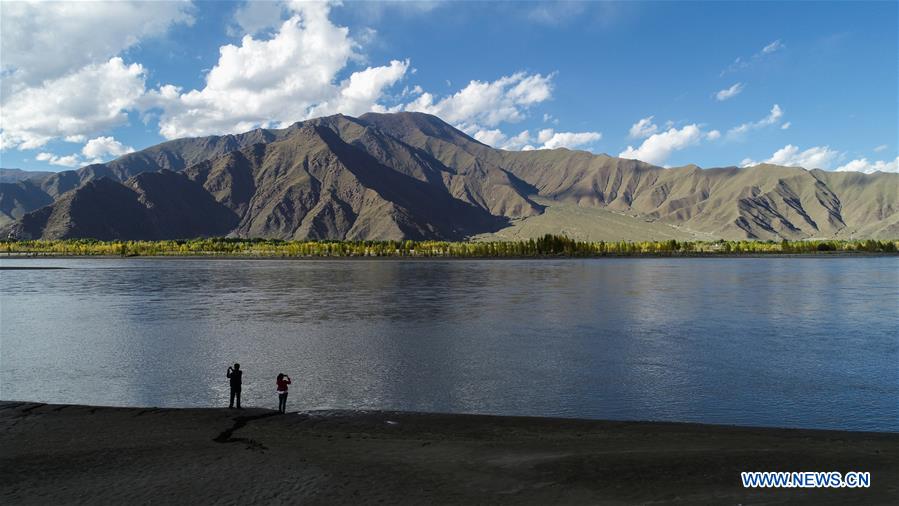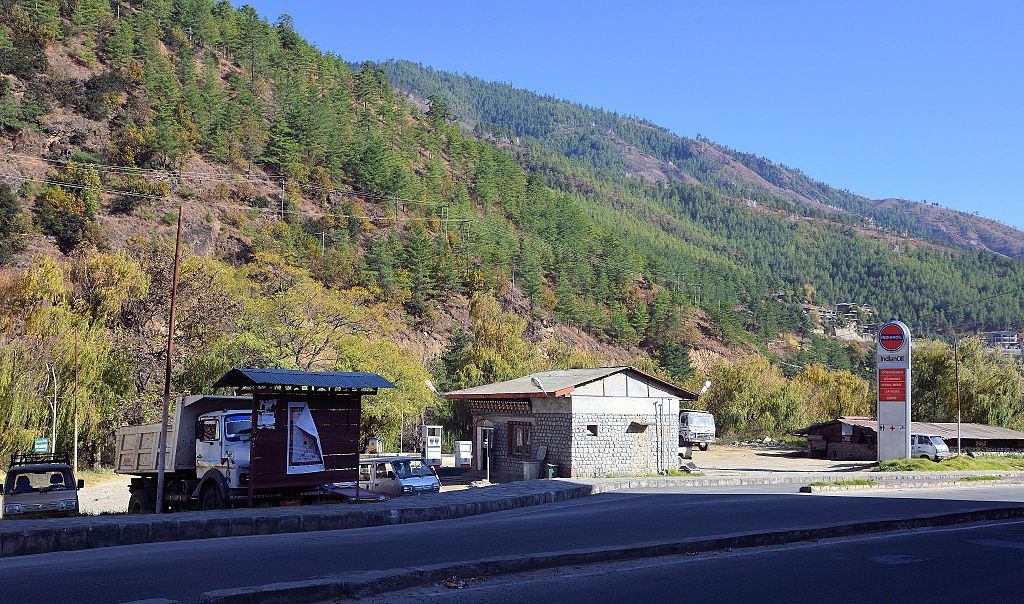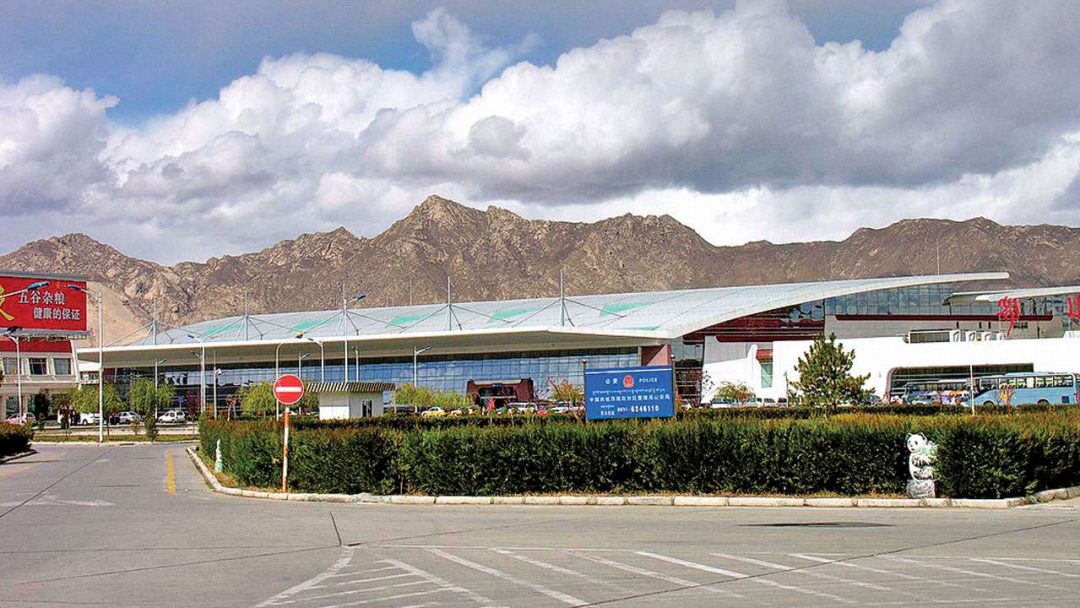After long efforts from diplomats, experts, activists and journalists China has agreed with request from lower riparian India and Bangladesh and the the country with headwater of Brahmaputra is providing data. “It is a positive sign towards a good trans-boundary river management. Extending cooperation will definitely lead towards better cooperation among neighbouring countries. Exchange of hydrological data and weather forecasting are very important since a trans-national river belongs to many countries. Exchange of hydrological data and weather forecasting are very important since a trans-national river belongs to many countries in the region” said Chandan Kumar Duarah, a science journalist and coservation activist based in Assam, India. Not only the Brahmaputra, five rivers originating on the third-pole, the Himalayas. They are the Yangtze, the Indus, the Mekong, the Salween, and the Ganges – rank among the world’s ten most endangered rivers, he writes in Eurasia Review.
Some science and environmental journalists had opportunitities to meet Chinese journalists and experts through the different programmes. The Thirdpole and Earth Journalism Network (EJNet) gave them opportunity to interact with Chinese counterpart and we insisted Chinese experts and journalists to work with a view to have bilateral or multilateral transboundary river management pact. Ninong Ering, a member of parliament from Arunachal, was among the first to officially acknowledge that China’s early warning helped, enabling residents of the East Siang district of Arunachal to move to higher grounds.
Despite the Chinese
authorities released 9020 cumec of water on the Yarlung Zangbo in Tibet,
China, due to heavy rainfall in Tibet, Arunachal Pradesh and Assam had
nothing to worry. For at Pashighat, in Arunachal Pradesh, the Siang is
756 metres. And at Jonai, where the river enters Assam, the width of the
river is around 4 km and hence the water level of the river would rise
only 30 cm there. The Union Water Resources Ministry official said
Indian experts have analysed the data shared by China and came to the
conclusion that the effect may not be so strong in the country even
through it was an alarming situation in China.
The early warning
China issued to India in August on the rising waters of its Tsangpo
river – which hit its highest level in 150 years – gave the Indian
authorities enough time to prepare. Thousands of people in scores of
districts in Assam and Arunachal have been affected in the latest
floods, but the losses are minimal in comparison with the devastation
last year, which killed 130 people and left three million people
stranded.
As China informed India about heavy rain in Tibet or
probable flood in downstream areas, the Indian Government informed and
cautioned Arunachal Government. A senior official of the Union Water
Resources Ministry said it was an unprecedented situation on the Chinese
side where Tsangpo broke a 150-year record with swollen waters and
hence China has shared the information with India.
Anyway, Delhi
should inform or involve Assam with the process equally with Arunachal
Pradesh. Assam been victim of devastating floods of every year.
Thousands of hectares of land has been affected by the Brahmaputra and
its tributaries. Since, vast floodplains and flood effected areas belong
to Assam, the state need more time to be prepared after getting the
flood warning. The annual rainfall in many parts of the northeast is
much higher than the southern coastal State. The densely populated
floodplains of Assam thus have to worry because of changes in land use
that have impacted the micro-climate adversely.
Both India and
China are fast-growing economies and technological clout, and resources
that can help resolve regional and global challenges. The Himalayas are
now subject to accelerated glacial thaw, climatic instability, and
biodiversity loss. What a difference a year can make in China-India
relations. Some Indian media houses interpreted the release of water in a
wrong way that might generate panic among people in the downstream.
China did not respond or reacted any allegation about release of water
from any dam.
As China is exploiting minerals from Yarlung Zangbor region in Tibet, India is building dams in Arunachal Pradesh to generate huge amount of hydropower. Most of river catchment is in Arunachal Pradesh, which is controlled by India but claimed by China. The region was militarised during the 1962 war, and has since been inundated by troops, roads, airports, barracks, and hospitals. These have caused deforestation, landslides, and river pollution.
All of
this development and strategic activities along the border is built on
the world’s third-largest ice-pack or in biodiversity hot spots. The
environmental impacts of their continued entrenchment are rarely
mentioned, despite the fact that they are significant and growing. The
build-up of troops on the border has displaced local ethnic groups, and
they have been encouraged to give up their grazing land to make way for
intensive farming. Animal habitats have decreased and clashes with
wildlife like tigers and snow leopards have increased. Population
transfers and agricultural intensification have even heightened the risk
that antibiotic-resistant super-bugs and other toxic pollutants will
seep into the world’s most diffused watershed.
China’s leading
English daily, The South China Morning Post writes “Just a year ago
China was being blamed for a deluge in northeastern India. Now,
following its tip off about the rising waters of the Tsangpo, it is
being praised for minimising the damage”. Just a year ago China was
being blamed for a deluge in northeastern India. Now, following its tip
off about the rising waters of the Tsangpo, it is being praised for
minimising the damage. Anyway, the latest fruitful data sharing opens
the door of better understanding on river, dam as well as trans-boundary
river management.
Early
warning is must to cope with floods and people along the Brahmaputra
heaved a sigh of relief as authorities in Indian states of Assam and
Arunachal geared up to face any eventualities. This simply did not
happen in the preceding weeks, when people in Kerala or in Nagaland and
Assam were caught off guard in some of the worst man-made disasters.
This
year the Meteorological Department has been warning of a deficit
monsoon and there prevailed a drought-like situation in many parts of
upper Assam. In the eastern part of the Golaghat district villagers
resorted to the age-old practice of Bhekulir biya (marrying of frogs) to
satisfy the rain gods! When conditions were such, the news of the
Dhansiri river breaking the highest flood level mark at Numaligarh in
Golaghat district in the early hours of Aug 2, 2018 not only confused
the weather forecasting authorities, but caught almost a million people
off-guard. It was simply unprecedented.
Going by the IMD’s daily
district level rainfall, there has not been unprecedented rainfall in
the Dhansiri River catchment in the preceding week of August 2. Rather
the unprecedented flash floods in Dhansiri and the Doyang rivers that
flow through Nagaland and Assam was brought by the Doyang dam situated
on the River Doyang, a tributary of the River Brahmaputra, located in
Wokha district of Nagaland.
The 75 MW Doyang Hydroelectric Power
Project owned by North Eastern Electric Power Corporation Limited
(NEEPCO)– the Central government company that owns and operates the dam
wreaked havoc downstream claiming five lives as NEEPCO opened the gates
of the dam.
By August 6, the Assam State Disaster Management
Authority put the number of affected persons at 87,300 and 7,086
hectares of land in Golaghat district were under water. The deluge left a
trail of destruction ravaging some 120 villages. Sediment and slush
filled up hundreds of wetlands in the catchment.
Flood in Tran-boundary Rivers
Effected
states in India has been witnessing such disasters due to most of
trans-boundary rivers. The high waves of Siang (the Tsangpo or Yarlung
Zangbo in China) reminded inhabitants of June, 2000 midnight when
30-feet high wave of Siang had submerged the historic township killing
at least 30 people and more than 100 had gone missing. People were fast
asleep and none expected flood as there was no rain. Siang is the main
headwater of the Brahmaputra and it contributes at least 20-30% percent
of water to the Brahmaputra. Flood and its effects are very much seen in
Assam. It is the ninth largest river in the world with 19,800 cubic
metre per second by discharge and the 15th longest is also one of the
few rivers in the world that exhibit a tidal bore. It is said that water
breaks some natural dam formed in the Himalayas and heavy water has
been contributed to the Siang and flow with high waves and becomes
turbulent.
It
is believed that the latest turbidity of the Siang water is connected
with the landslide dams that developed on the course of the river in
Bayi District and rampant mining in southern China. Tensions rose when
China unveiled a new mine in Lhunze, near the de facto border with
India’s northeastern state of Arunachal Pradesh, east of Bhutan. The
mine sits on a deposit of gold, silver, and other precious metals worth
up to $60 billion.
Dams on Brahmaputra or on its tributaries
either in Tibet, China or in Arunachal Pradesh, India are a matter of
grave concern. The study of the December 10, 2017 satellite imagery
captured by the European Space Agency’s Sentinel -2 undertaken by
research scholars Chintan Sheth of the Bengaluru-based National Centre
for Biological Research (NCBS) and Anirban Datta-Ray of the Ashoka Trust
for Research in Ecology and the Environment (ATREE) had led to the
conclusion that three dams were formed on the Yarlung Tsangpo, in the
Bayi District of Nyingchi County of Tibet.
Downstream people in
India are against building dams either in Chinese or Indian side. The
lingering bitterness resurfaced late last year, when the more raucous
sections of the Indian media began to buzz with a new China conspiracy
story – the blackening of the Brahmaputra river in northeastern India.
Seizing on a lawmaker’s allegation that Chinese excavations were
releasing extraordinary levels of slag in the water, several media
outlets saw in the discolouring a “sinister plot” from across the
border. China and India’s geopolitical-resources rush threatens the
safety of this entire river system. The new Lhunze mine’s position among
the Brahmaputra’s headwaters is so precarious that its owner, Hua Yu
Mining, was allowed to mine there. .” The mine is liable to be damaged
by the region’s frequent earthquakes. It was suspected that any toxic
leak from Lhunze flowed straight into the Brahmaputra.
An Indian
television channel, Times Now, for example, claimed “exclusive”
laboratory results to “expose” China’s evil design to “poison” and
“divert” the river through mining and dam-building. China eventually
refuted the media reports, saying an earthquake in Tibet that had caused
large-scale landslides was responsible for the change of colour, a view
echoed by the Indian government. This incident again revived demands
for China to share hydrological data, with Indian lawmakers alleging
that China was using its status as an upper riparian state to punish
India.
New Delhi had then blamed China for breaking an earlier
agreement to share hydrological data. In 2006, India and China had
signed a pact under which China would share hydrological data from May
15 to October 15 every year for the Brahmaputra and Sutlej rivers, both
of which originate in Tibet. The two sides renewed the agreement in
memorandums of understanding signed in 2013 and in 2015. But when floods
struck northeastern India last year, reports surfaced that China was
not adhering to the agreement. There was speculation that China held
back on the data in retaliation for the 73-day military stand-off
between Indian and Chinese soldiers in Doklam near Bhutan around the
same time. On its part, China said its hydrological systems were washed
away by floods, as a result of which it was unable to share data.
In October-November 2017, the Siang turned dark with sediment, so much so that fish and animals were dying. As the turbidity of the river began before it entered the Indian territory, there was much speculation about Chinese activity being behind the change which prompted political leaders from the region to write to Prime Minister Narendra Modi requesting him to take up the matter with China. Experts, journalists and activists from Assam demanded for trans-national cooperation for agriculture, meteorology and flood mitigation and other purposes.
It is a wholly different story this year, which marked a
high point in bilateral relations when Indian Prime Minister Narendra
Modi and Chinese President Xi Jinping met in May for an “informal
summit” to reset strained ties. One of the two key pacts reached at the
end of the summit requires China to provide hydrological data during the
flood season from May 15 to October 15 every year, and if water levels
exceed mutually agreed limits during the non-flood season.
The
river had turned muddy and got cleaned by April 2018. Several scientific
studies in subsequent periods held an earthquake of 6.4 magnitude on
the Richter scale in Tibet as a strong reason for generating enough dirt
to turn the colour of the water from crystal clear to black. It is
worth mentioning here that two Indian scientists working on the
Brahmaputra had found three artificial, landslide-induced dams on the
Yarlung Tsangpo (the Chinese name of the Siang), containing an
accumulated water of around one billion cubic metres. The dams were
formed following the November 17, 2017 earthquake of 6.4-magnitude that
shook the Nyingchi County of Tibet.
Virulent Siang River
The
Yarlung Zangbo in Arunachal Pradesh, India turned virulent with
unusually high waves in last July. But the reason behind such changes in
the river, which generate the major chunk of flow of the Brahmaputra,
could not be determined. The water of the river had also turned blakish
with high turbidity again. The Central Water Commission (CWC) maintained
that since the end of the part of July, the river is behaving such a
manner and also carrying turbid water. Many residents they had such
waves in the rive never in their life and were not sure of the reasons
behind such phenomenon. The causes of the unusual behavior could either
be man-made or natural. Last year, China clarified that it would not
pollute its own river, Yarlung Yarlung or Tsangpo in Tibet.
However,
the high waves of the river are confined only to river’s reaches in
Pasighat area of Arunachal Pradesh and no impact of this changed
behaviour of the river is felt in the downstream areas of Assam. The
Yarlung Zangbo takes the name of Siang as it enters India at Geling in
Upper Siang district. Two other rivers– Lohit and the Dibang –join the
Siang at Kobu Chapori in Assam about 30 km downstream of Pasighat, which
is about 230 km from the international border to form the mighty
Brahmaputra. The unusually high waves in the Siang river have created
fear among the people of the two Arunachal Pradesh districts and the
administration had cautioned the people to refrain from venturing into
it for fishing, swimming and other activities.
Nobody could detect
the cause of this and we had been very worried with the phenomenon. The
Chinese side neither react nor informed about natural or unnatural
activities on their side. After around one month later China informed
Delhi as well as Indian Government that it had been heavy rain in Tibet
or South China region and it may cause flood in downstream areas in
India. The unusal waves had been seen since July, 2018.
On August
29, 2018, China alerted India of a massive cloudburst in Tibet that
forced the Chinese authorities to release more water down the
Brahmaputra than at any time over the last 50 years. The discharge was
measured at 9,020 cubic metres per second (cumec) at 8 a.m. on August 29
and led to huge waves on the Siang in Arunachal Pradesh. Eyewitness
said the wave heights at up to four metres, uncharacteristic of a river.
It gave hydrological data and flood warning to the Government of India.
As soon as Delhi received these information, the concerned department
sent the message to State Government of Arunachl Pradesh as it is the
immediate bordering state of China.
The East Siang Deputy
Commissioner (DC) Tamiyo Tatak in a circular issued on 29th of August
stated that the Tsangpo river has been swelling with a discharge of
9,020 cumec on August 29th morning, which broke the record of last five
decades. The very next day of the flood alert, the Indian Air Force
rescued 29 people stranded in an island of the Siang.
Following
the report of heavy downpour in the Tsangpo basin in China, which was
relayed to the Arunachal government by the Government of India, sounded
alert of possible deluge by the Siang river and asked the people
residing in low lying areas to refrain from venturing into the river and
nearby water bodies to prevent any eventualities.
Dhemaji and
Dibrugarh in Assam had sounded alert of deluge due to unprecedented rise
of water in Siang River, creating panic among the people living in
downstream Assam. The Dibrugarh district administration referring to a
report warned the people of unprecedented rise of water level in the
Brahmaputra river that might cause severe flood on the left bank. The
administration in an order
issued today also asked the government
officials not to leave the district headquarters and stay alert to deal
with the situation.
Dhemaji district administration asked the
people of riverine villages to be ready for shifting to safer places.
The district administration, however, asked the people not to panic as
the water resources department is keeping a vigil on the situation and
any impending danger would be informed to the people in advance.
Downstream, the Assam State Disaster Management Authority (ASDMA) warned
the district administrations in the eastern part of the state to be on
high alert on August 30.
There was nothing to panic as the Central
Water Commission (CWC) had reported that the water level at the Grand
Canyon of Tsangpo on August 14 was 8070 cumec and an increase should not
inflict severe damages, Arunachal government officials said quoting the
Chinese communication. Of course, Indian Air Force helicopters rescued
19 people stranded on an island in the Siang in the Sille-Oyan area on
the morning of August 31.
As per Ravi Ranjan, superintendent
engineer of the Central Water Commission (CWC) – It’s certainly a
relief. “The overall flood situation in Brahmaputra and Barak basin is
well within control, there is no need for any alarm, all the tributaries
are running well below danger levels. Real-time information sharing by
China has certainly helped prepare better.” Ninong Ering, a member of
parliament from Arunachal, was among the first to officially acknowledge
that China’s early warning helped, enabling residents of the East Siang
district of Arunachal to move to higher grounds.
It has been a
hurdle for riparian countries to mitigate water and weather related
problems without a proper mechanism data sharing, weather forecasting
and flood mitigation. And for the first time Indian state governments
issued flood alerts based on data received from China. The Assam State
Disaster Management Authority (ASDMA) agreed the alert from China but
“made a difference”. ASDMA officials said although India had developed
its own hi-tech satellite imaging systems which could pick up
disturbances on the ground, the information was insufficient without
ground data from China.

